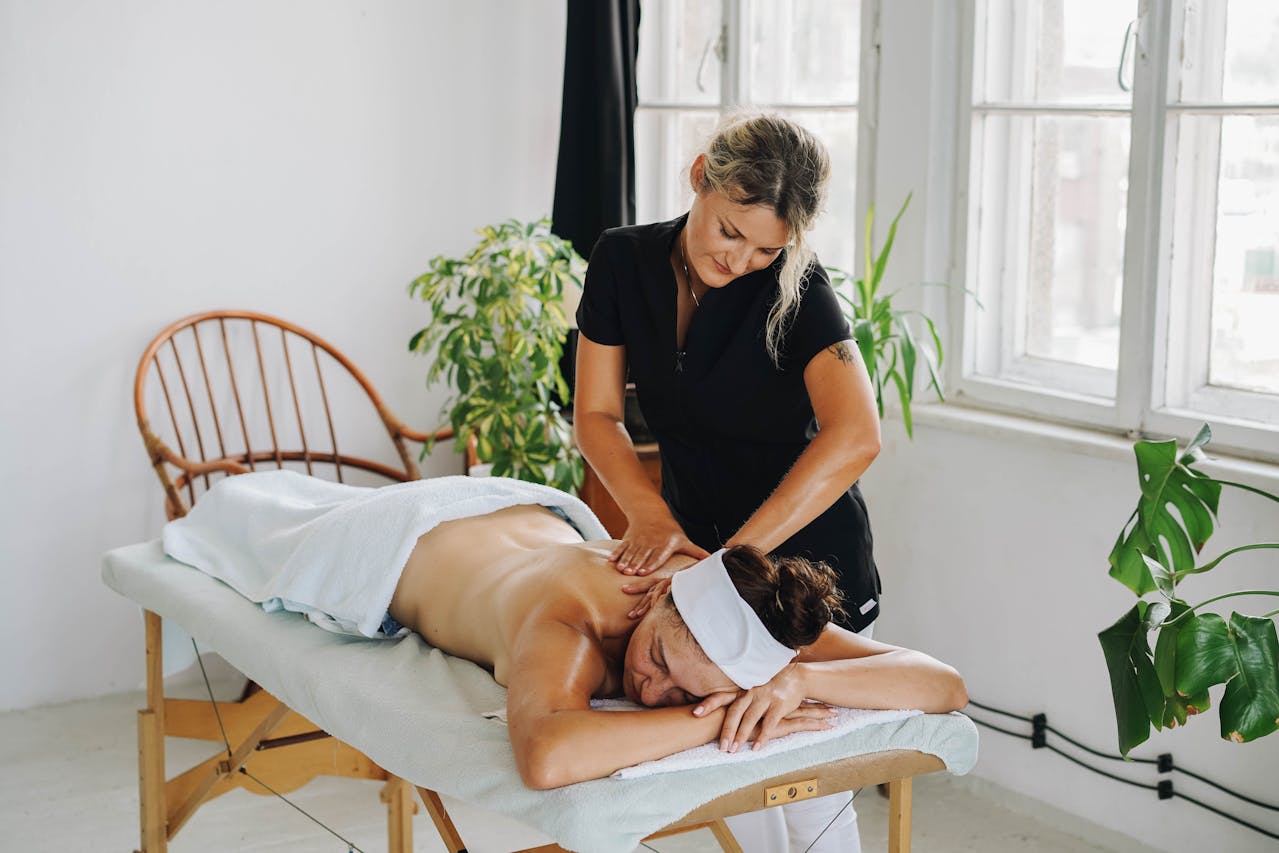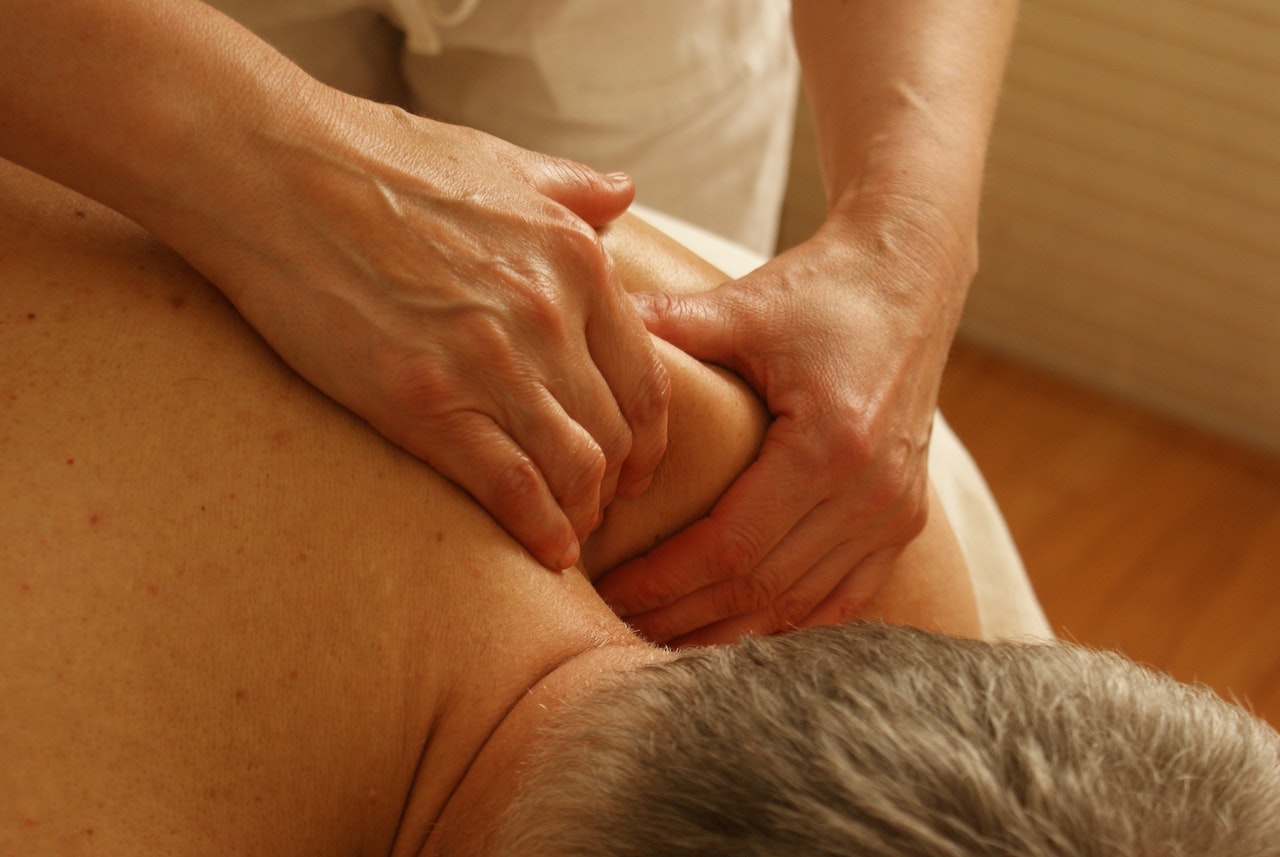Ever wondered how osteopathy can transform your well-being? Dive into the ultimate guide to understanding osteopathy and unlock the secrets to holistic health. Discover the principles, benefits, and applications of this natural therapy that focuses on your body’s innate ability to heal. From relieving pain to enhancing mobility, osteopathy offers a unique approach to improving your overall quality of life. Ready to explore the world of osteopathy and its profound impact on your health journey?
What is Osteopathy
Holistic Approach
Osteopathy is a holistic approach to diagnosing and treating musculoskeletal disorders. It focuses on pain osteopathy, aiming to improve overall health.
Osteopathy emphasizes the body’s self–healing abilities, viewing the body as an interconnected unit where each part influences the others. By addressing structural issues, such as misalignments or imbalances, osteopaths aim to enhance the body’s natural healing processes.
Principles of Osteopathy
The core principles of osteopathy revolve around the belief that the body has an innate ability to heal itself. Osteopaths prioritize treating the root cause of pain rather than just alleviating symptoms.
Osteopathy places a strong emphasis on the musculoskeletal system, considering it crucial for maintaining overall health. By optimizing the function of muscles, bones, and joints, osteopaths aim to restore balance and promote well-being.
History and Origins
Osteopathy traces its roots back to the late 19th century when Dr. Andrew Taylor Still founded this alternative medical practice. Dr. Still believed in the body’s innate ability to heal and developed osteopathic techniques based on this principle.
Over time, osteopathy has evolved into a recognized healthcare profession, with practitioners specializing in various areas such as osteoarthritis and shoulder injuries. Today, osteopathic medicine is integrated into mainstream healthcare systems worldwide.
Osteopathy Compared to Physiotherapy and Chiropractic
Focus Comparison
Osteopathy, physiotherapy, and chiropractic vary in their treatment focus. Osteopaths emphasize holistic care, considering the body as a whole system. They use manual techniques to address posture issues, spinal alignment, and overall well-being. In contrast, physiotherapists concentrate on improving mobility, function, and rehabilitation through exercises and modalities.
Approach Differences
Osteopaths take a hands-on approach, using manipulation and stretching to restore balance in the body. They believe that by correcting musculoskeletal imbalances, they can enhance the body’s ability to heal itself. Chiropractors, on the other hand, primarily focus on spinal adjustments to alleviate pain and improve nerve function. Physiotherapists employ a combination of exercises, education, and modalities to enhance physical function and promote recovery.
Conditions Addressed
Osteopathy, physiotherapy, and chiropractic are effective in treating various conditions. Osteopaths excel in managing musculoskeletal issues like back pain, neck pain, and stiffness. They also help with disabilities caused by musculoskeletal imbalances. Physiotherapists specialize in rehabilitation after injuries or surgeries, addressing conditions like sports injuries or stroke recovery. Chiropractors mainly deal with spinal issues such as misalignments that lead to pain and restricted movement.
Unique Aspects of Osteopathy
One unique aspect of osteopathy is its emphasis on manual treatments. Osteopaths use their hands to diagnose and treat patients, focusing on gentle techniques to restore balance in the body. They also consider lifestyle factors, emotional well-being, and environmental influences when designing treatment plans. This holistic approach sets osteopathy apart from physiotherapy and chiropractic.
Conditions Treated by Osteopathy
- Back pain
- Neck pain
- Postural issues
- Musculoskeletal stiffness
- Mobility limitations
Pros and Cons of Osteopathy
- Pro: Holistic approach to health
- Pro: Emphasis on manual techniques for treatment
- Con: Limited availability in some regions
Exploring Osteopathic Manipulative Medicine
Techniques
Osteopathic manipulative medicine (OMM) involves hands–on techniques like soft tissue massage and joint mobilization. These methods aim to address musculoskeletal issues.
The manual therapy aspect of OMM focuses on manipulating the body’s muscles and joints to alleviate pain and improve mobility. By applying pressure, stretching, or resistance, osteopaths help patients regain optimal movement.
Benefits
OMM offers various benefits such as improved mobility, pain reduction, and enhanced overall well–being. Patients often experience relief from aches, especially in the musculoskeletal framework.
- Enhanced mobility: OMM helps restore proper movement in individuals suffering from joint stiffness or limited range of motion.
- Pain reduction: Through targeted manipulation, OMM can alleviate discomfort caused by musculoskeletal conditions.
- Overall well-being: By addressing underlying issues, OMM contributes to the patient’s physical health and general movement.
Patient Experience
During an OMM session, patients may feel a sense of relaxation as the osteopath works on their muscles and joints. The gentle movements and pressure applied during treatment can lead to immediate relief for some individuals.
Role in Diagnosis
Osteopathic manipulative medicine plays a crucial role in diagnosing musculoskeletal problems. By assessing a patient’s bones, joints, and general movement, osteopaths can identify areas of concern and develop personalized treatment plans.
Integration with Traditional Medicine
OMM is often used alongside conventional medical practices to provide comprehensive care for patients. This integration allows for a holistic approach to treating musculoskeletal disorders and ensuring the patient’s physical well-being.

Benefits of Osteopathic Treatments
Natural Healing
Osteopathic treatments focus on natural healing processes, emphasizing the body’s ability to self-regulate and heal. Through manual techniques, osteopaths aim to restore balance and enhance the body’s natural healing mechanisms.
Osteopathy promotes overall health by addressing not just the symptoms but also the root causes of musculoskeletal issues. By improving blood circulation, reducing inflammation, and enhancing mobility, osteopathic treatments contribute to holistic well-being.
Long-Term Benefits
Compared to conventional medicine, osteopathic treatments offer long-term benefits for individuals dealing with various musculoskeletal conditions. While conventional medicine often focuses on symptom management, osteopathy targets the underlying issues to prevent recurrence.
Osteopathic treatments not only provide immediate relief but also prevent future injuries by improving posture, flexibility, and muscle strength. This proactive approach helps individuals maintain optimal physical health and reduce the risk of chronic conditions.
Comprehensive Approach
Osteopathic treatments encompass a comprehensive range of therapies, including manual adjustments, soft tissue manipulation, and exercise rehabilitation. This multifaceted approach ensures that patients receive personalized care tailored to their specific needs.
By combining therapeutic applications with rehabilitative strategies, osteopaths help individuals recover from injuries, manage chronic pain, and improve overall function. This structured rehabilitation process enhances the body’s natural healing abilities and promotes long-term wellness.
Pros and Cons
Pros:
- Focuses on natural healing processes
- Addresses root causes of musculoskeletal issues
- Provides long-term benefits by preventing injury recurrence
Cons:
- May not be suitable for acute medical emergencies
- Effectiveness may vary depending on individual conditions
Who Uses Osteopathic Manipulative Medicine
Target Audience
Osteopathic manipulative medicine is utilized by individuals seeking alternative treatments for various health conditions. Patients with chronic pain or musculoskeletal issues often turn to osteopathy for relief.
Demographics
The appeal of osteopathic care extends to a diverse range of individuals, emphasizing its non-invasive nature. This approach attracts patients looking for holistic and personalized healthcare solutions.
Growing Popularity
Osteopathic manipulative medicine is gaining traction among specific groups, including athletes, pregnant women, and individuals with postural concerns. Athletes benefit from osteopathy’s focus on injury prevention and performance enhancement.
- Athletes find osteopathic care beneficial for enhancing performance and preventing injuries.
- Pregnant women seek osteopathic treatments for alleviating discomfort and promoting overall well-being.
- Individuals with postural issues are drawn to osteopathy for improving alignment and reducing pain.
Understanding Osteopathic Techniques
Myofascial Release
Osteopathic techniques often involve myofascial release, a hands-on approach targeting the body’s connective tissue to improve range of motion and reduce pain. This technique focuses on releasing tension in the fascia to enhance flexibility and mobility.
Craniosacral Therapy
Craniosacral therapy is another key component of osteopathic techniques, involving gentle manipulation of the skull and spine to enhance the flow of cerebrospinal fluid. This therapy aims to address imbalances in the central nervous system, promoting overall well-being.
Individualized Treatment Plans
In osteopathy, individualized treatment plans are crucial for addressing each patient’s unique needs and conditions. By tailoring techniques to specific requirements, practitioners can effectively restore balance, improve circulation, and alleviate pain. This personalized approach enhances the effectiveness of treatment outcomes.

Your Guide to Osteopathic Practices
Finding a Qualified Osteopath
When seeking osteopathic treatment, it’s crucial to ensure you consult with a licensed osteopathic physician. Verify their credentials and certifications to guarantee expertise in the field.
To find a reputable osteopathic physician, consider seeking recommendations from your primary care doctor or friends who have undergone successful osteopathic treatments. You can check online directories of accredited osteopaths in your area.
What to Expect During an Osteopathic Session
During your osteopathic appointment, the osteopath will conduct a thorough assessment of your condition. This may involve discussing your medical history, performing physical examinations, and assessing your musculoskeletal system.
After the initial evaluation, the osteopath will create a personalized treatment plan tailored to address your specific problems. Treatment methods may include manual techniques like manipulation of joints, muscles, and tissues, as well as providing advice on diet and lifestyle modifications.
Incorporating Osteopathic Practices into Daily Life
To maximize the benefits of osteopathic treatments, it’s essential to follow the advice provided by your osteopathic physician. This may include incorporating rehabilitative exercises and stretches into your daily routine to enhance the effectiveness of the treatment plan.
In addition to following the prescribed treatment regimen, maintaining a healthy lifestyle is key to long-term wellness. This involves heeding diet recommendations, staying active, and practicing good posture habits to prevent recurrent conditions.
Final Remarks
You’ve now gained a comprehensive understanding of osteopathy, its benefits, techniques, and applications. By delving into the world of osteopathic manipulative medicine, you’ve uncovered a holistic approach to healthcare that focuses on your body’s innate ability to heal itself. Whether you’re seeking relief from pain, improving your overall well-being, or enhancing your body’s functionality, osteopathy offers a natural and effective solution.
Take the next step in your journey towards optimal health by exploring osteopathic treatments further. Consult with a qualified osteopath to experience firsthand the personalized care and targeted therapies that can address your specific needs. Embrace the principles of osteopathy to unlock your body’s potential for healing and restoration. Your path to wellness starts with understanding and embracing the transformative power of osteopathic medicine.
Unlocking the Benefits of Osteopathy: Say Goodbye to Aches and Tension!
Are you tired of dealing with persistent discomfort and physical tension? Look no further than MedicinEvolution, where the secrets of Osteopathy are unveiled to address your bodily irregularities and bring about transformative relief! Say goodbye to the sources of your distress—awkward postures, sedentary routines, and muscular tension—as MedicinEvolution delves into the fundamental origins of your discomfort. Guided by their experienced expertise, you’ll discover newfound freedom from the pain that once seemed insurmountable!
But wait, there’s more! Introducing OsteoRevive Body Restoration—a groundbreaking approach that goes beyond traditional methods. If you’ve been tirelessly seeking relief from stubborn symptoms without success, OsteoRevive offers a beacon of hope. Harness the potential of Osteopathy as OsteoRevive’s skilled practitioners work their magic on your fatigued body.
Whether you’re dealing with persistent discomfort, lingering tension, or bothersome aches, their transformative techniques are tailored to address the unique challenges you face. Don’t let discomfort dictate your life any longer—take control and book your session with MedicinEvolution today! Embrace the world of Osteopathy and rediscover the joy of a pain-free life. Your body will thank you!





